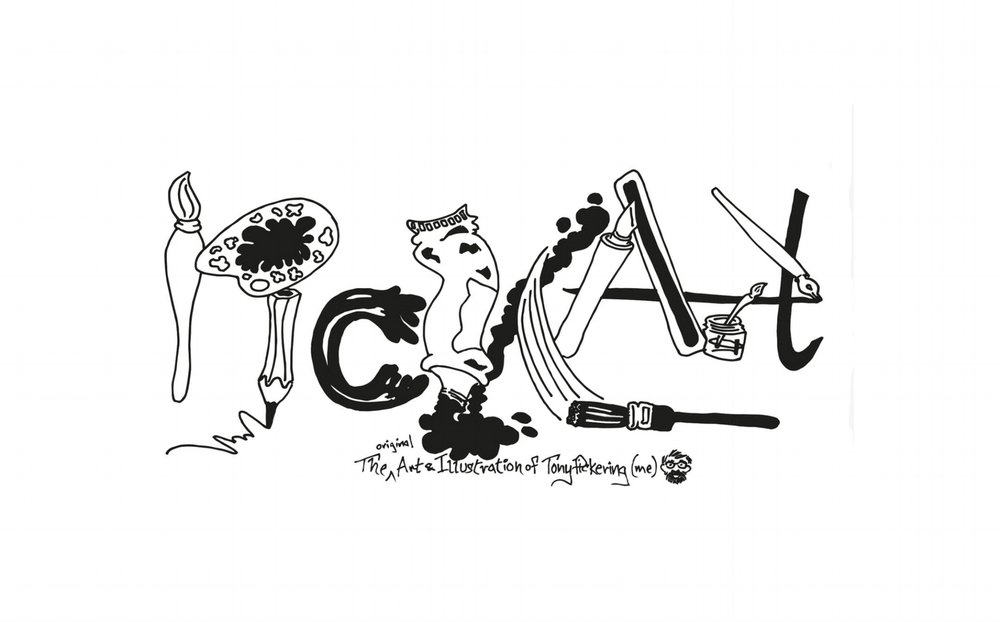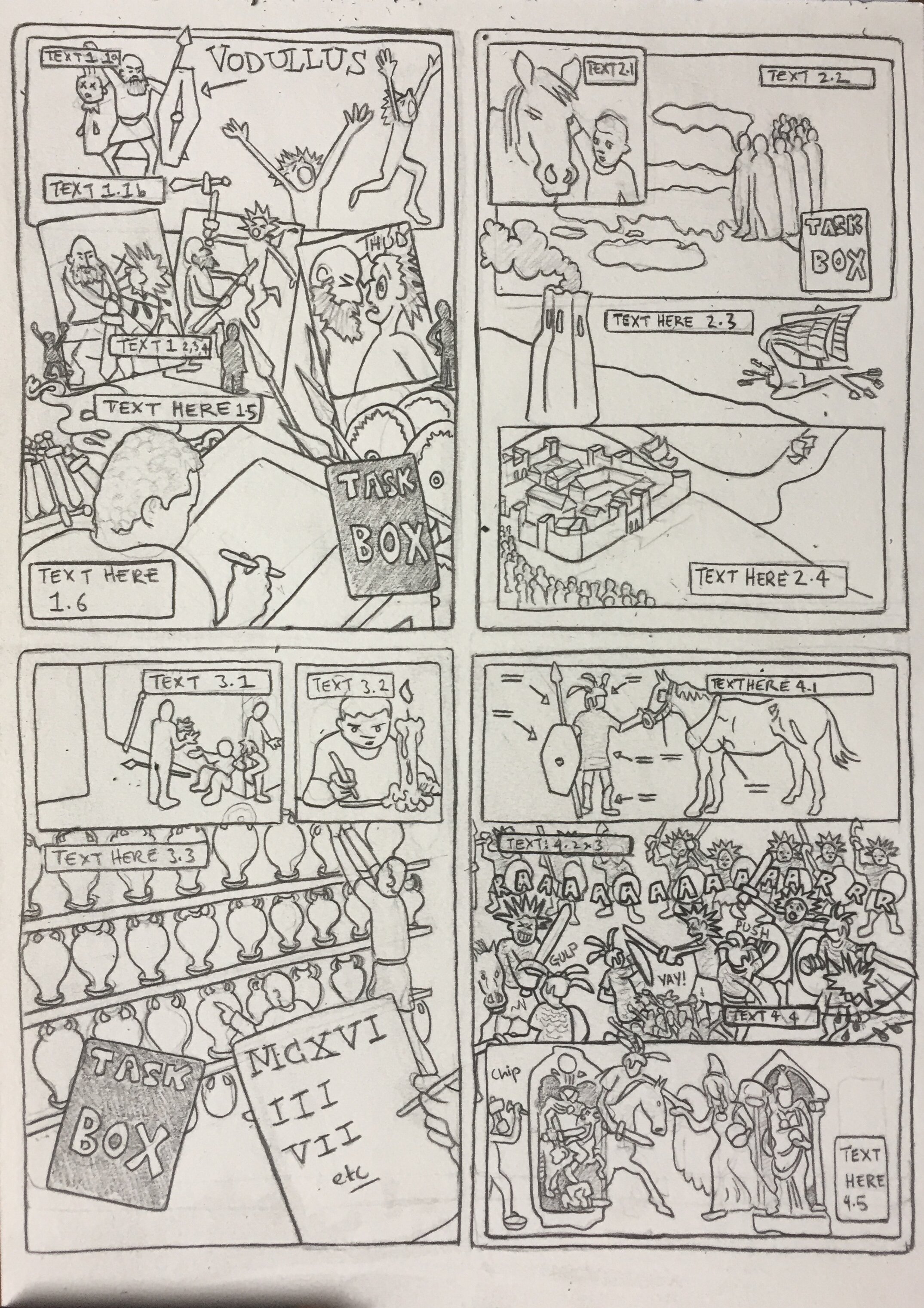One of my favourite forms of drawing is thumbnailing. This might be for a narrative comic, or as a stepping-stone from quick sketching to a realised composition, but whatever the purpose I often feel Thumbnails are some of my best work.
I love the challenge they provide because at the thumbnail stage all the willow-the-wisps of ideas and thoughts start to solidify and collide against each other. They begin with soft lines that lead to decisions about design and composition. These lines are deconstructing a narrative or a brief, starting to shape them within the space – whether that’s a page limit, a size or purpose.
fig.1: “Romans” thumbnails.
For this post I’m going to talk about some recent thumbnails for a comic I’ve been working on [Fig.1] – so in this case the design is a form of choreography, of isolating narrative into beat of movement or gesture. Taking the script and purpose of the piece and establishing the key relationships: between the words and text; between the symbolism and the story; between the narrative and the reader; and internally between the characters and setting.
My initial thoughts turned to the violence. Not going to lie, I loved working out the rhythm and gory detail of the fight sequences – deciding how to identify a different visual quality between the two sections. The sequence top left is more character focused, so uses multiple panels to hone-in on specific moments, whilst the other sequence bottom right has a more epic sweep, so I wanted to keep the beats ‘in-panel’ – kind of like the camera panning across a landscape on film.
In contrast there were the moments of transition, and quiet interiors, which often need more specifics in terms of reference, and more thought in terms of the composition. I find that for these ‘quieter’ moments the key is working out the motivation of the characters and the emotional tone – what does the story need to communicate to the audience in these moments, and how can it be visualised? In this case moments of connection – top right where he meets his horse, and bottom left where the soldiers enjoy some down-time, and moments of introspection – bottom right where he writes by candle, all serve to bring out the humanity of the narrative arc, and build to the dénouement
My drawing in thumbnails is generally more stylised – after all these are produced at a small scale (this whole page is a4), but it identifies where research is necessary, and gives an opportunity to apply that research to the needs of the story – working out objects, clothing and actions, that in turn feed into the design of characters and places. Of course, half the point of thumbnails is that they might be changed in collaboration (in whatever form that comes – possibly an author, maybe feed-back from a trusted reader), and I already know changes that will need to be made to these – including losing one of my favourite panels; but the act of putting together these thumbnails has created a rhythm and pattern to work to making the intangible tangible.

